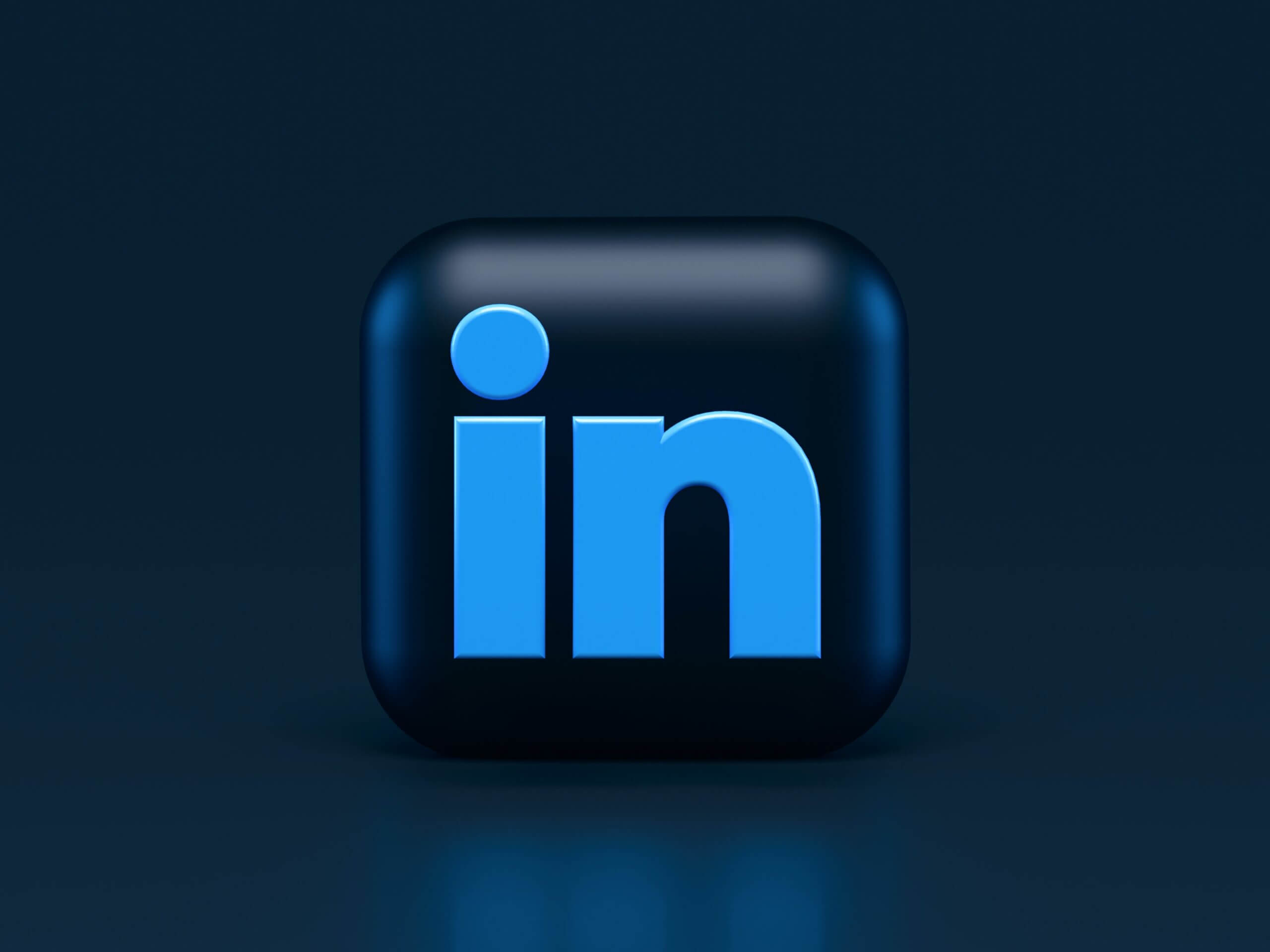It’s no secret that your social media posts are fair game to the MBA admissions committee.
Nearly two-thirds of MBA admissions officers visit an applicant’s social media profiles to aid their decision-making, according to survey data from Kaplan Test Prep in 2021. Kaplan reports that 36% of admissions officers visit applicants’ social media profiles like Facebook, TiKTok, and Instagram to learn more, and of those, 58% say that what they found had a negative impact, up significantly from 32 percent in 2019 (42% found something that had a positive impact).
The good news is that you can – and should – use this information to your advantage. Because LinkedIn is the most professional among the various social media channels you may be using, it’s of special interest to admissions. A robust presence on LinkedIn is a must-have.
As former Associate Director of Admissions at Berkeley Haas, my colleagues and I were looking for consistency across an applicant’s personal and professional identities. Do you seem like the person you represented in your application materials? How does your LinkedIn profile reflect your personal brand? If you’re invited to join our MBA community, will you represent our school well? And when coaching MBA hopefuls for the top business schools, my Fortuna Admissions colleagues and I integrate a thorough social media audit in the early stages of the application strategy.
So how can you use LinkedIn to enhance your business school application strategy? Read on for top tips from my colleagues at Fortuna Admissions.
10 Tips for Optimizing Your Online Professional Profile
Think of amplifying your LinkedIn profile as part of your business school application process. And as you do, consider your key audiences, who are now MBA admissions and alumni, as well as students and faculty of your target programs.
1. Choose a worthy photo.
This is inevitably the first item to catch a viewer’s eye on your profile, so consider the impression you wish to make. I’ve had clients who did not have an appropriate picture. To keep in mind:
- Don’t use a photo from one of your other social media accounts; your LinkedIn profile should be a standalone asset.
- Dress in clothing that is appropriate for an interview (wear a nice shirt or blouse), look straight at the camera, and SMILE.
- Crop the photo around your face.
A well-chosen background graphic can provide a way to differentiate and add some creativity to your LinkedIn profile – show something noteworthy about yourself – but don’t be overly quirky.
2. Differentiate with your headline.
The brief line of text under your name can be a few words or a short statement. Think of it as a succinct slogan of who you are/what you want to be. As Fortuna’s resume expert Jody Keating quips, “Chances are that there’s another applicant to your target program with the same job title.” The headline is another great way to distinguish yourself!
3. Craft a concise and compelling summary.
Unlike the Headline, use the About section to share more – a few sentences, in summary, are advised, versus writing a full-blown essay. Keep the tone upbeat and positive. Don’t start crafting the About section until you have considered these questions:
- What do you want your intended audience to know about you that isn’t necessarily in your application materials?
- What is already in the application materials that you want to expand upon and tell your intended audience about more so?
- What do you want your intended audience to think or feel about you?
4. Take advantage of the Featured section.
Featured provides you with the opportunity to upload videos or highlight posts (click “add section” to create). You could use a video to showcase a recent activity or achievement. The Featured section also allows you to link videos that are of interest to you. If you choose to link videos, do so wisely as the content you share reflects your judgment and maturity.
5. Create a custom URL.
A personalized URL is handy on a resume for allowing others to quickly find you on LinkedIn. I am seeing more resumes that just include phone/email/LinkedIn, and no longer include a mailing address. If you do, keep in mind:
- You can create a custom URL that is 3-100 characters long. Do not use spaces, symbols, or special characters.
- The customizable part of the URL is case insensitive. This means using SharonJoyce or sharonjoyce will both point to the same profile.
- If the URL you want isn’t available, select another that is. LinkedIn cannot make custom URLs available to members upon request.
6. Showcase your distinction and include quantifiable achievements.
Step back and create a list of your accomplishments and unique distinctions that might not surface on other media or materials. Then, look for ways to include these key elements in your profile. Weaving quantifiable metrics into the body of your profile can really amplify your achievements. Where possible, underscore work experience with how much, specifically, you’ve boosted productivity or increased revenue, for example. Your profile is also a place to cite awards or accolades, even if academically based. Always keep your key audiences in mind, looking for ways to add or emphasize items of special relevance.
7. Seek appropriate recommendations and highlight featured skills.
Because LinkedIn reflects on your professional visibility, having recommendations lends additional weight to your profile. Given that you’re soliciting recommendation letters in support of your application, it’s appropriate to ask your recommenders to provide a brief testimonial quote to add to your LinkedIn profile.
Note: It’s important to have more “up” recommendations than “down”– i.e. people who have supervised you in the work setting or in one of your community service endeavors. For LinkedIn, it’s okay to also have a few testimonies from team members or clients; it’s nice to evidence what peers think about you, too. Banking some LinkedIn recommendations is also a tactical move in the long run as your audience shifts to potential post-MBA employers.
Additionally, LinkedIn allows you to list 50 featured skills, but it’s not necessary to include more than a few you wish to highlight, which may allow you to consolidate endorsements where it matters most. Anyone with over 99 endorsements receives the designation, “highly skilled.” You can ask those who are writing Letters of Recommendation for you to drop in an Endorsement and/or ask others in your network to do the same; endorsements offer extra credibility to your strengths and skills.
8. Engage with the school community.
Follow and engage with your target schools to demonstrate your interest. It’s also a great way to do your research on a program, follow the latest news and announcements, and stay connected to the school and its community. I also suggest following MBA resources, like Poets&Quants, to show your commitment to earning the MBA degree.
Take it a step further by following the people or groups leading conversations in arenas you’re passionate about, such as artificial intelligence, renewable energy or social innovation. If you can demonstrate you’re a subject matter expert engaged in the issues, it can help to differentiate you from others with a static profile. Any sort of relevant self-promotion you can do through your participation, even a well-placed comment on an article authored by someone else, is advantageous.
9. Connect to school alumni (with discretion).
It’s appropriate – and strategic – to connect with school alumni with whom you’ve met, especially if you’re looking to build a relationship. If you’ve only met virtually, I recommend asking permission and getting the green light first to connect with them. I do not, however, recommend reaching out to alumni or students with whom you’ve not had a personal interaction or met face-to-face. Once you’ve crossed the acceptance threshold to become a member of that school’s community, it’s a different story. This is a murky area in terms of social media norms and it’s also where your good judgment matters.
10. Show good judgement.
Speaking of judgment, this is about being discerning in your posting and sharing, as well as who or what you choose to follow. The reality is that admissions are typically “scanning out” more than “scanning in,” so make sure anything you’re putting out there is professional. It’s really a judgment check. While business schools won’t screen out applicants for their political persuasion (unless extreme or discriminatory), participating in controversial groups or discussions can get tricky. Your filter should always be whether you are putting things out there that appropriately reflect who you are and what you care about.
“Admissions officers have a hefty workload, so any online audit is likely to be brief,” says my Fortuna colleague and former MBA Admissions Director at IE Business School, Lisa Bevill. “But a quick skim can impart incoherence, or, alternatively, a compelling personal brand.”
Let’s Get You In
At Fortuna Admissions, we’re a dream team of former admissions directors and seasoned MBA coaches from the world’s top business schools. We specialize in helping applicants craft compelling stories and maximize every part of the application process.
Book a free consultation to assess your candidacy and find out how we can help you get into your dream MBA program.




